| Total population | |
|---|---|
| Ancestries and ethnic origin; 2019 American Community Survey [1] 29,153 Sierra Leonean-born, 2013 [2] 35,213 | |
| Regions with significant populations | |
| |
| Languages | |
| Religion | |
| Islam, Protestantism, minority Catholicism | |
| Related ethnic groups | |
Sierra Leonean Americans are an ethnic group of Americans of full or partial Sierra Leonean ancestry. This includes Sierra Leone Creoles whose ancestors were African American Black Loyalists freed after fighting on the side of the British during the American Revolutionary War. [3] Some African Americans trace their roots to indigenous enslaved Sierra Leoneans exported to the United States between the 18th and early 19th century. In particular, the Gullah people of partial Sierra Leonean ancestry, fled their owners and settled in parts of South Carolina, Georgia, and the Sea Islands, where they still retain their cultural heritage. The first wave of Sierra Leoneans to the United States, after the slavery period, was after the Sierra Leone Civil War in the 1990s and early 2000s. According to the American Community Survey, there are 34,161 Sierra Leonean immigrants living in the United States. [2]
The first people from present Sierra Leone who emigrated to the United States were slaves imported in this country between the 18th and 19th centuries. The first slaves from Sierra Leone arrived to the United States are some of the Gullah ancestries, or (in Georgia) Geechee, which were sent from Africa or since the Caribbean, particularly Barbados, to serve as free labor for the cultivation of rice, whose area of cultivation was the southeast coast of the modern United States. Indeed, many slavers employed slaves from the West African coasts because their great ability to work in the rice plantations. [4] The Sierra Leonean slaves belonged to peoples such as the Mendes, Temnes, Vai, Loko, Fula, Sherbro and Limba people [5] and many of them were Muslims (as is the case of the Fulbes). Slaves from Sierra Leone made up 24% of the slaves arriving imported to these place.[ citation needed ] Most of the slaves of Sierra Leone were imported to southeast, mainly to South Carolina (where arrived the 70% of those slaves. The slavers of modern-day Sierra Leona arrived in South Carolina were more of 18,300 people, settling in places as the Saint Helena Island) and Georgia (where arrived the 15% them. They were more of 3,900 slaves from this region, becoming in the most of the slaves of the colony), followed, over long distances, mainly by Virginia, Maryland and Florida (those places had in total more of 11% on total of slaves from Sierra Leone in the present U.S., having between 900 and 1,000 of those slaves depending on the American state). Many of these slaves hailed from Bunce Island in the Sierra Leone River.
Moreover, between 1776 and 1785, during the American Revolution, many Gullah of Sierra Leoneans origin fled from the United States and emigrated to Nova Scotia, Canada, after the abolition of slavery in this country. [4] Subsequently, in 1787 the British helped 400 freed slaves from the United States, Nova Scotia (many of them were Gullah), and Great Britain to return to Sierra Leone, where they founded the colony Freetown in 1792. The descendants of the settlers are the Sierra Leone Creole people. [6] [7] [3] [8] [9] [10]
In 1841, a group of slaves that traveled on the ship La Amistad, whose destination was the island of Cuba, made an uprising against the merchants who drove the ship and seized of it. [4] Most of the slaves were Mende people, [11] but also had people of other tribes such as the Temne. The Amistad arrived to the American coasts and the U.S. Supreme Court freed them from slavery. Most of those slaves returned to Africa. Only some of them remained in the United States, acquiring the American citizenship. Slavery was finally abolished after of 1865, after the American Civil War. [4]
They did not emigrate to the US again until, apparently, the 70s when a new group of Sierra Leoneans emigrated to this country, mostly students who decided complete your studies at American universities. Some of them get a "legal residence status" (or married an American) to live permanently in the US. Many of them became doctors, lawyers and accountants. [4]
The number of Sierra Leoneans who emigrated to the United States grew throughout the 80's due to the majority poverty and political problems suffered by the Sierra Leonean population. Many of them were students although they also worked to help their families [4] or sent them money if they lived in Sierra Leone and encouraged them to emigrate. [12] In addition, although some of the Sierra Leoneans who completed their studies returned to Sierra Leone, other Sierra Leoneans decided to stay in the US and obtain legal residency status.
The 1990 American Census showed that 4,627 people linked your origins with Sierra Leone, many of them American citizens. Between 1990 and 1996 another many Sierra Leoneans migrated to the US, mostly fleeing the civil war. Many of them arrived to the country with visitor, as well as with student visas. During this period, more of 7,150 Sierra Leoneans with a legal status emigrated to the United States. After 1996, many Sierra Leoneans legally emigrate to the US thanks they had a refugee status and relatives residing in the US. By 1999, about 2,500 Sierra Leoneans had emigrate to the US annually, according to The United Nations High Commission for Refugees. [4] The recent refugees tend to have lower education than earlier migrants, who have University degrees. [12]
Currently, 80% of African Americans who are descendants of slaves have some ancestors that came from Bunce Island in Sierra Leonne.[ citation needed ] Most Sierra Leonean immigrants reside in the Baltimore- Washington, D.C., metropolitan area. Other Sierra Leonean communities are settled in suburbs of Alexandria, Fairfax, Arlington, Falls Church, and Woodbridge in Virginia, and in Landover, Lanham, Cheverly, Silver Spring, and Bethesda in Maryland. There are also Sierra Leonean communities in the Boston and Los Angeles metropolitan areas, and in New Jersey, Florida, Pennsylvania, New York, Texas, Oregon and Ohio.
Most Sierra Leoneans are Muslims and practitioners of native cultures, but there are also many Christians. Sierra Leonean Americans communicate in English, either as a first or second language, due to the British colonial history. However, Krio is the lingua franca and primary language of communication among diverse groups of Sierra Leoneans living abroad [13] although a few still speak tribal languages reflecting their unique heritage. Many Sierra Leonean residents in the USA work in two or three jobs to reach enough salary to help their families in their country, whilst some others have university degrees. Indeed, while some Sierra Leoneans arrived in the United States to pursue university studies, some are already holders of degrees from British universities or from Fourah Bay College in Freetown. Many Sierra Leoneans residing in the USA incorporate their children to secret organizations of Sierra Leonean origin,[ citation needed ] which teach them the cultures own of their tribes. Sierra Leonean Americans have also been helped by many former Peace Corps volunteers who worked in Sierra Leone. In the US, many Sierra Leoneans have established relationships (and have even intermarried) with people from other cultures and nationalities, especially with other African immigrants. [4]
The Gullah, or (in Georgia) Geechee, are descendants of slaves that were sent from Africa or since the Caribbean, particularly Barbados, to serve as free labor for the cultivation of rice, whose area of cultivation was the southeast coast of the modern United States, and that still live in Sea Islands and the coastal areas of South Carolina and Georgia. Slaves from Sierra Leone made up 24% of the slaves arriving in this place. Many slavers employed slaves from the West African coasts because their great ability to work in the rice plantations. Indeed, most of the slaves that were imported to southeast coast of the United States came from the West African's rice-growing region, established mainly in Sierra Leone, through the Bunce Island.
So although the ancestors of the Gullah come from many places on the coast of West Africa, many of the elements that are part of their material culture, food (rice) and crops (indigo) are the same as those held by Sierra Leoneans. Thus, the Gullah have the same types and capacities of textiles, fishing, foodways, folktales, vernacular architecture, music, basket making, net making, language, belief systems, pottery and woodcarving that the Sierra Leoneans. [5] So, Dr. Hair, a British historian, said the "startling" fact that all texts in African Gullah dialect are written in languages spoken in Sierra Leone. Most African texts gathered by historian Turner are belonging to the Mende language. But Dr. Cabello also said that an "unusually large proportion" of the four thousand African names and personal loans in the Gullah language come from Sierra Leone. He estimated that twenty-five percent of African names and twenty percent of African vocabulary words came from the Sierra Leonean languages, principally Mende and Vai [14] [15] (one of the Gullah words of origin not Sierra leonean is the same term "Gullah", that may derive from Angola [16] ).
The Gullah/Geechee people speak a language based mainly on Sierra Leonean Krio, [17] a creole deriving from English, indigenous West African languages, and other European languages. The Gullah language also has varying degrees of influences from African languages such as Ewe, Mandinka, Igbo, Twi, Yoruba, and Mende.
Although Sierra Leoneans in United States belong to a variety of ethnic and religious groups have been created organizations to help Sierra Leonean community entire. So, the Chicagoland Association of Sierra Leoneans, formed in 1996, is a nonprofit organization to unite Sierra Leoneans in a community, socialize newcomers, and help to Sierra Leoneans living in Chicago and abroad. Also in 1975 it created one organization named Tegloma ("let's progress" in Mende) in Washington DC, the largest nonprofit, nonpolitical Sierra Leonean organization in the world, and it help Sierra Leoneans in te world and promoting Mende culture, the culture of the second largest ethnic group in Sierra Leone. There is an organization created in New York on behalf of health care providers that represent nursing. In 2008 the Sierra Leone Nurses Association (SLNA) was started in New York, in honor of the original SLNA started originally in Sierra Leone in 1961. Following the first chapter in the USA started in 2007 in California. And worldwide chapters since. There is a union organization called Union of Sierra Leone organizations in New York (USLO) in 2010. [12]
Sierra Leone first became inhabited by indigenous African peoples at least 2,500 years ago. The Limba were the first tribe known to inhabit Sierra Leone. The dense tropical rainforest partially isolated the region from other West African cultures, and it became a refuge for peoples escaping violence and jihads. Sierra Leone was named by Portuguese explorer Pedro de Sintra, who mapped the region in 1462. The Freetown estuary provided a good natural harbour for ships to shelter and replenish drinking water, and gained more international attention as coastal and trans-Atlantic trade supplanted trans-Saharan trade.
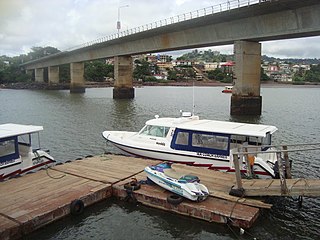
Freetown is the capital and largest city of Sierra Leone. It is a major port city on the Atlantic Ocean and is located in the Western Area of the country. Freetown is Sierra Leone's major urban, economic, financial, cultural, educational and political centre, as it is the seat of the Government of Sierra Leone. The population of Freetown was 1,055,964 at the 2015 census.

Gullah is a creole language spoken by the Gullah people, an African-American population living in coastal regions of South Carolina and Georgia as well as extreme northeastern Florida and the extreme southeast of North Carolina.

Sierra Leone's music is a mixture of native, French, British, West Indian and Creole musical genres.

The Mende are one of the two largest ethnic groups in Sierra Leone; their neighbours, the Temne people, constitute the largest ethnic group at 35.5% of the total population, which is slightly larger than the Mende at 31.2%. The Mende are predominantly found in the Southern Province and the Eastern Province. The Mende are mostly farmers and hunters. Some of the major cities with significant Mende populations include Bo, Kenema, Kailahun, and Moyamba.

The Gullah are an African American ethnic group who predominantly live in the Lowcountry region of the U.S. states of Georgia, Florida, South Carolina, and North Carolina, within the coastal plain and the Sea Islands. Their language and culture have preserved a significant influence of Africanisms as a result of their historical geographic isolation and the community's relation to their shared history and identity.

Bunce Island is an island in the Sierra Leone River. It is situated in Freetown Harbour, the estuary of the Rokel River and Port Loko Creek, about 20 miles upriver from Sierra Leone's capital city Freetown. The island measures about 1,650 feet by 350 feet and houses a castle that was built by the Royal Africa Company in c.1670. Tens of thousands of Africans were shipped from here to the North American colonies of South Carolina and Georgia to be forced into slavery, and are the ancestors of many African Americans of the United States.
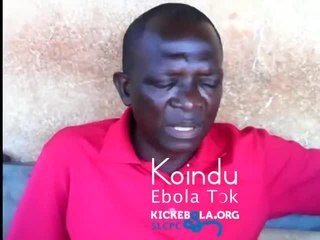
The Sierra Leonean Creole or Krio is an English-based creole language that is lingua franca and de facto national language spoken throughout the West African nation of Sierra Leone. Krio is spoken by 96 percent of the country's population, and it unites the different ethnic groups in the country, especially in their trade and social interaction with each other. Krio is the primary language of communication among Sierra Leoneans at home and abroad, and has also heavily influenced Sierra Leonean English. The language is native to the Sierra Leone Creole people, or Krios, a community of about 104,311 descendants of freed slaves from the West Indies, Canada, United States and the British Empire, and is spoken as a second language by millions of other Sierra Leoneans belonging to the country's indigenous tribes. Krio, along with English, is the official language of Sierra Leone.
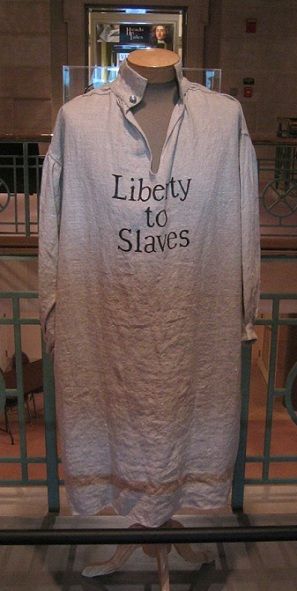
Black Loyalists were people of African descent who sided with the Loyalists during the American Revolutionary War. In particular, the term refers to men who escaped enslavement by Patriot masters and served on the Loyalist side because of the Crown's guarantee of freedom.
Emory Campbell is a community leader among the Gullah people, African Americans who live in the coastal low country region of South Carolina and Georgia. The Gullahs have preserved more of their African linguistic and cultural heritage than any other black community in the US.
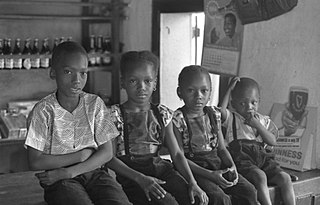
The Temne, also called Atemne, Témené, Temné, Téminè, Temeni, Thaimne, Themne, Thimni, Timené, Timné, Timmani, or Timni, are a West African ethnic group, They are predominantly found in the Northern Province of Sierra Leone. Some Temne are also found in Guinea. The Temne constitute the largest ethnic group in Sierra Leone, at 35.5% of the total population, which is slightly bigger than the Mende people at 31.2%. They speak Temne, a Mel branch of the Niger–Congo languages.
The Sherbro people are a native people of Sierra Leone, who speak the Sherbro language; they make up 1.9% of Sierra Leone's population or 134,606. The Sherbro are found primarily in their homeland in Bonthe District, where they make up 40% of the population, in coastal areas of Moyamba District, and in the Western Area of Sierra Leone, particularly in Freetown. During pre-colonial days, the Sherbro were one of the most dominant ethnic group in Sierra Leone, but in the early 21st century, the Sherbro comprise a small minority in the nation. The Sherbro speak their own language, called Sherbro language.

Atlantic Creole is a cultural identifier of those with origins in the transatlantic settlement of the Americas via Europe and Africa.
The Tuckers of Sherbro are an Afro-European clan from the Southern region of Sierra Leone. The clan's progenitors were an English trader and agent, John Tucker, and a Sherbro princess. Starting in the 17th century, the Tuckers ruled over one of the most powerful chiefdoms in the Sherbro country of Southern Sierra Leone, centered on the village of Gbap.

Joseph A. Opala, OR is an American historian noted for establishing the "Gullah Connection," the historical links between the indigenous people of the West African nation of Sierra Leone and the Gullah people of the Low Country region of South Carolina and Georgia in the United States.
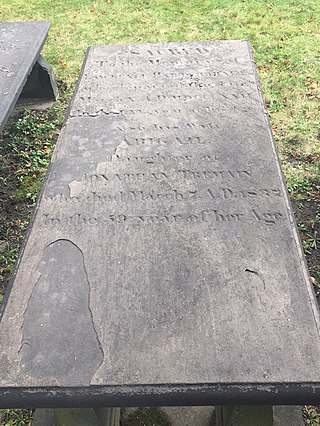
The Nova Scotian Settlers, or Sierra Leone Settlers were African Americans who founded the settlement of Freetown, Sierra Leone and the Colony of Sierra Leone, on March 11, 1792. The majority of these black American immigrants were among 3,000 African Americans, mostly former slaves, who had sought freedom and refuge with the British during the American Revolutionary War, leaving rebel masters. They became known as the Black Loyalists. The Nova Scotian settlers were jointly led by African American Thomas Peters, a former soldier, and English abolitionist John Clarkson. For most of the 19th century, the Settlers resided in Settler Town and remained a distinct ethnic group within the Freetown territory, tending to marry among themselves and with Europeans in the colony.

Sierra Leone is home to about sixteen ethnic groups, each with its own language. In Sierra Leone, membership of an ethnic group often overlaps with a shared religious identity.

The Sierra Leone Creole people are an ethnic group of Sierra Leone. The Sierra Leone Creole people are descendants of freed African-American, Afro-Caribbean, and Liberated African slaves who settled in the Western Area of Sierra Leone between 1787 and about 1885. The colony was established by the British, supported by abolitionists, under the Sierra Leone Company as a place for freedmen. The settlers called their new settlement Freetown. Today, the Sierra Leone Creoles are 1.2 percent of the population of Sierra Leone.
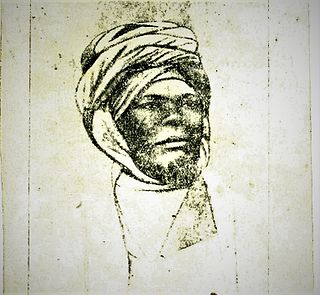
The Oku people or the Aku Marabout or Aku Mohammedans are an ethnic group in Sierra Leone and the Gambia, primarily the descendants of marabout, liberated Yoruba people who were released from slave ships and resettled in Sierra Leone as Liberated Africans or came as settlers in the mid-19th century.
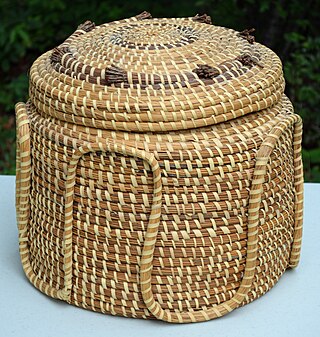
The Gullah are African Americans who live in the Lowcountry region of the U.S. states of Georgia, Florida, South Carolina, and North Carolina, in both the coastal plain and the Sea Islands. They developed a creole language, also called Gullah, and a culture with some African influence.